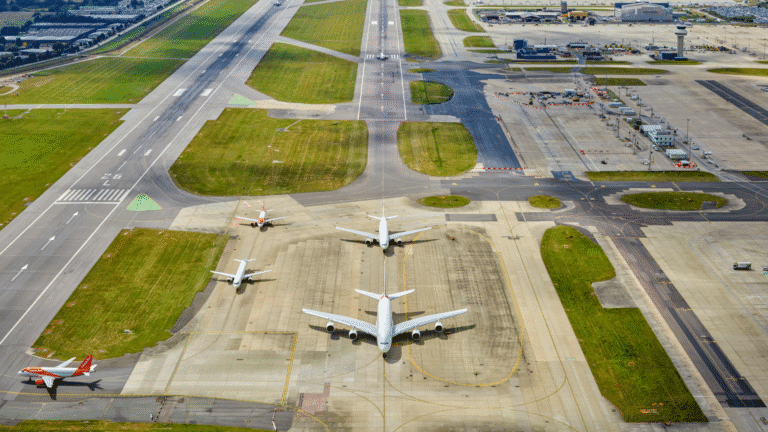London Gatwick (LGW) Airport’s £2.2 billion second runway project has secured final approval from Transport Secretary Heidi Alexander, marking a significant development for the UK’s aviation and logistics sector.
The privately financed scheme will reposition Gatwick’s existing emergency runway 13 yards north, enabling it to operate alongside the main strip for narrow-bodied aircraft such as Airbus A320s and Boeing 737s. The upgrade is expected to accommodate around 100,000 additional flights annually, with operations potentially beginning before 2029.
Stewart Wingate, VINCI Airports Managing Director for United Kingdom said: “After a lengthy and rigorous planning process, we welcome the Government’s approval of plans to bring our Northern Runway into routine use, ahead of the expected deadline.
“This is another important gateway in the planning process for this £2.2bn investment, which is fully funded by our shareholders and will unlock significant growth, tourism and trade benefits for London Gatwick and the UK and create thousands of jobs.
“As we’ve said previously, it is essential that any planning conditions enable us to realise the full benefits of the project and do not impose unnecessary constraints that make it uneconomic to invest in.
“We now need to carefully examine the details of the planning consent. Once we have done that, we will be able to comment further.”
Cargo opportunity
While much attention has historically focused on Gatwick’s role in passenger travel, the airport has become an increasingly important hub for air cargo. Last year, Gatwick handled over 150,000 tonnes of freight, with volumes expected to climb sharply once the second runway is operational. The expanded capacity will strengthen the airport’s position as a critical gateway for time-sensitive goods such as pharmaceuticals, perishables, and e-commerce shipments.
Airport executives argue that the project is essential to meeting the demands of UK exporters and importers. “With capacity constraints holding back business, trade and tourism, this is a no-brainer for growth,” a Government source commented, adding that the new runway will directly support regional and national supply chains.
Gatwick has positioned itself as a vital logistics node, linking British businesses with key European, Middle Eastern, and North American markets. Cargo operators, including DHL, FedEx and UPS, have signalled interest in scaling up activity once additional slots become available. The airport’s south terminal cargo centre, already a major distribution hub, is expected to see both expansion and greater integration with digital customs systems to speed up clearance processes.
Transport Secretary Alexander endorsed the scheme after revised plans addressed concerns over noise management, surface transport connectivity, and environmental impact. “The Transport Secretary has cleared Gatwick expansion for take-off,” a Government insider said. “Any airport expansion must be delivered in line with our legally binding climate change commitments and meet strict environmental requirements.”
The Planning Inspectorate had initially withheld approval, but earlier this year recommended the scheme proceed subject to modifications, which Gatwick has since adopted.
The airport estimates the runway will deliver £1 billion in annual economic benefits and create up to 14,000 jobs across aviation, logistics, and supporting industries. These benefits are expected to be felt across the South East, particularly in freight forwarding, warehousing, and last-mile delivery sectors.
By shifting focus toward enhancing its cargo handling capability, Gatwick aims to relieve pressure on Heathrow while unlocking new trade opportunities for the UK. The second runway, airport leaders argue, is not only about increasing passenger flights but ensuring Britain has the infrastructure to remain competitive in global logistics.




